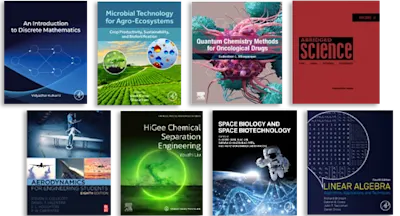
Challenges in Delivery of Therapeutic Genomics and Proteomics
- 2nd Edition - May 21, 2025
- Latest edition
- Editors: Aliasgar Shahiwala, Naazneen Surti
- Language: English
Challenges in Delivery of Therapeutic Genomics and Proteomics, Second Edition is a complete reference on the biological principles involved in gene and protein delivery to cells… Read more

After an overview of the barriers to genomics and proteomics delivery, the book dives into physical, chemical, and biological methods of gene delivery. Further chapters extensively discuss the delivery of proteins and therapeutic peptides through the respiratory, oral, parenteral, transdermal, topical, uterine, and rectal pathways. This book is the ideal reference for pharmaceutical scientists dealing with gene and protein/peptide delivery. Regulators and corporate researchers can also benefit from the wide coverage of delivery methods presented.
- Includes genomics and proteomics delivery in one single volume
- Highlights what’s currently known and where further research is necessary
- Covers topics from academic and corporate R&D perspectives
- Includes new chapters on regulation, CRISPR/Cas9, and computational tools
2. Gene Delivery Using Physical Methods
3. Gene Delivery Using Chemical Methods
4. Gene Delivery Using Viral Vectors
5. RNA based therapeutics
6. Protein and Peptide Delivery through Respiratory Pathway
7. Oral Delivery of Proteins and Peptides: Concepts and Applications
8. Parenteral Delivery of Peptides and Proteins
9. Other Routes of Protein and Peptide Delivery: Transdermal, Topical, Uterine, and Rectal
10. Computational tools in genomics and proteomics
11. CRISPR/Cas9 gene-editing for treating gene and protein disorders
12. Regulatory guidance on therapeutic proteomics and genomics
- Edition: 2
- Latest edition
- Published: May 21, 2025
- Language: English
AS
Aliasgar Shahiwala
NS
Naazneen Surti
Dr. Naazneen Surti is currently working as a Professor with Indukaka Ipcowala College of Pharmacy, CVM University. She holds the degree of Bachelor of Pharmacy, Master of Pharmacy in Pharmaceutics, and a Ph.D. in Pharmacy (Pharmaceutics) from The Maharaja Sayajirao University of Baroda, India. She is a seasoned professional with 24 years of experience which is a blend of industrial experience and academia. Her area of specialization is development of novel drug delivery systems. She has guided more than 45 students for their PG dissertations, 3 students for PhD and 6 industry defined projects. Dr. Naazneen surti holds two Indian patents, has several book chapters and has over 40 research publications in national and international journals of repute. She is a recipient of research project grant and seminar grant from GUJCOST and Women Scientist scholarship from DST under WOS-A scheme.